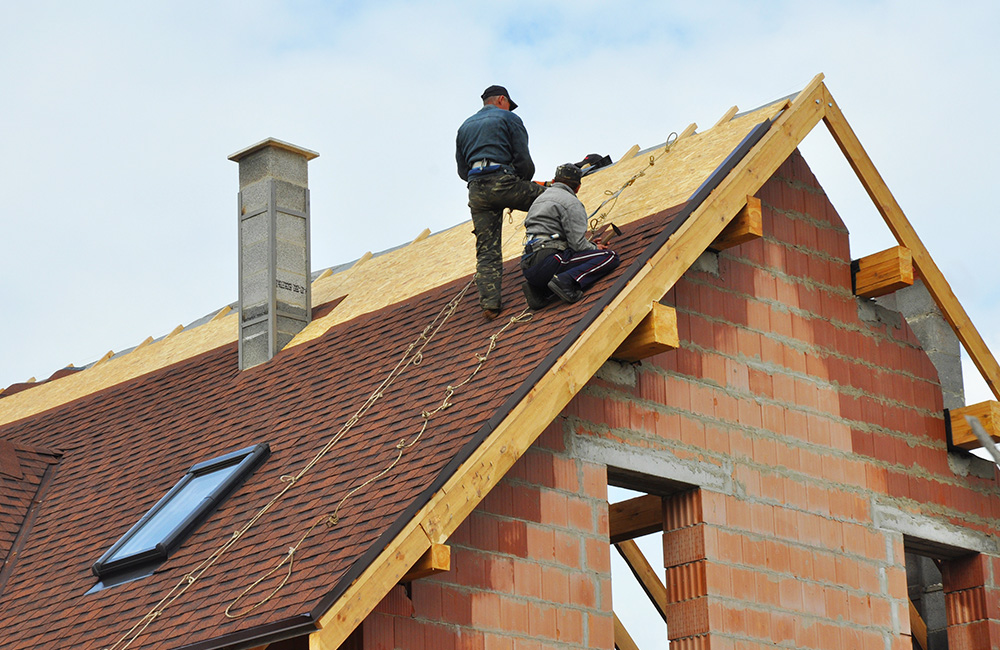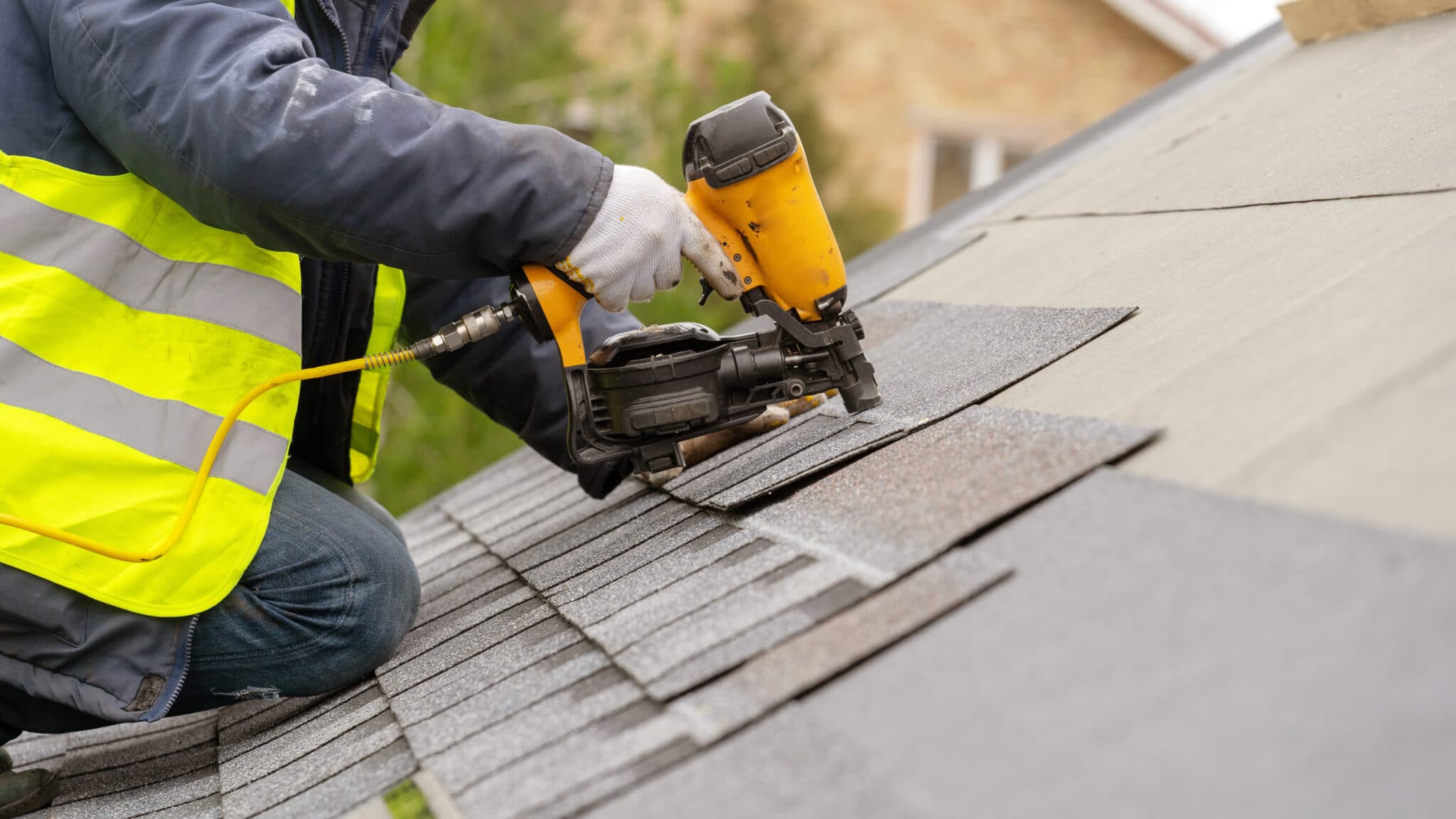A Homeowner's Overview to Types of Roofs: Selecting the Right Design for Your Requirements

Popular Roofing Styles
When it comes to choosing a roofing system design, house owners commonly evaluate their alternatives thoroughly to make certain both aesthetic charm and functionality. Among one of the most preferred styles are the gable, hip, and flat roofings, each offering aesthetic qualities and unique benefits.
Gable roofs, identified by their triangular form, are favored for their easy layout and reliable water drain. This style is especially appropriate for regions with hefty rains or snow, as it decreases the danger of water merging.
Hip roofs, which slope on all 4 sides, offer added security and longevity, making them a superb option for areas vulnerable to high winds. Their architectural complexity enables better style adaptability and can enhance the total curb appeal of a home.
Level roofing systems supply a modern-day visual and take full advantage of useful exterior space, making them popular for metropolitan settings. While they call for more maintenance to avoid water build-up, their smooth look can enhance contemporary architecture.
Eventually, the choice of roofing system style should mirror the property owner's personal preference while considering elements such as local environment, architectural style, and prospective resale value. Each style contributes distinctly to a home's total personality and performance.

Product Options
Selecting the proper roofing system material is simply as important as picking the ideal design, as it considerably affects the roof covering's resilience, maintenance demands, and overall aesthetic. roofers oahu. Home owners have a selection of choices to think about, each with special advantages and downsides


Steel roof gives phenomenal resilience and durability, commonly surpassing 50 years, while likewise being lightweight and immune to fire and rot. Steel roof coverings can be more pricey upfront.
Clay and concrete floor tiles offer a traditional appearance and excellent lifespan yet call for a sturdy framework because of their weight. These products are extremely durable and immune to extreme climate condition. Wood trembles offer a rustic visual however demand normal upkeep to avoid rot and bug damages.
Lastly, artificial roofing products, such as rubber or plastic compounds, imitate the appearance of conventional materials while being lightweight and low-maintenance. Inevitably, the selection of roofing material should line up with the home owner's budget, wanted lifespan, and upkeep choices, ensuring an ideal suit for their particular demands.
Power Efficiency Factors To Consider
Energy performance plays an important role in the overall efficiency of a roof, influencing both environmental sustainability and property owner energy costs. When choosing a roofing system, it is essential to consider products and layouts that improve power performance. As an example, reflective roof materials, commonly referred to as "amazing roofings," can significantly minimize warm absorption, lowering interior temperature levels and minimizing the requirement for cooling.
In addition, the roofing's shade and slope can affect its power efficiency. Lighter shades generally reflect more sunlight, while steeply pitched roof coverings help with better airflow, reducing warm accumulation - roofers oahu. Insulation likewise plays an important duty; a well-insulated roof can protect against warmth loss in winter and keep interiors cooler in summer, thus enhancing energy cost savings
In addition, incorporating energy-efficient roof choices with photovoltaic panels can better lower power expenses and reliance on nonrenewable sources. House owners ought to additionally think about neighborhood roof repair oahu environment conditions when selecting roof covering materials and designs, as these elements straight impact power usage.
Upkeep Requirements
The longevity and performance of a roof system are substantially affected by the upkeep demands linked with its style and products. Various roof kinds necessitate varying levels of upkeep, which can affect both the home owner's time and budget plan.
Asphalt shingles, for instance, typically require annual examinations to check for deterioration, including cracked or missing shingles. Routine cleansing of gutters is important to avoid water damage and extend the roof's lifespan. Metal roofs, while sturdy, still require periodic checks for corrosion and sealer honesty. These roofs additionally take advantage of cleaning up to preserve visual allure and functionality.
Tile roof coverings, understood for their longevity, demand much less regular upkeep yet need careful assessment and replacement of harmed tiles. Level roofings, although offering contemporary aesthetics, commonly need even more interest; they need routine inspection for merging water and particles removal to prevent leaks.
Inevitably, recognizing the maintenance demands connected with different roof useful site covering styles allows home owners to make informed choices, guaranteeing the picked roof aligns with their way of life and dedication to maintenance. Focusing on maintenance will boost the roofing system's efficiency and expand its life span, supplying satisfaction for many years to find.
Effect On Resale Value
When considering a new roof style, property owners need to recognize that the choice can dramatically influence the building's resale worth. A well-chosen roofing not only improves aesthetic appeal yet also indicates to possible buyers that the home is well-kept and structurally sound. Different roof products and styles bring differing degrees of desirability in the genuine estate market.
For example, asphalt shingles are prominent as a result of their affordability and large range of colors, typically interesting budget-conscious buyers. On the other hand, a steel roofing system, while much more expensive upfront, offers durability and power efficiency, which can attract customers trying to find reduced upkeep and sustainability. In addition, unique designs such as slate or floor tile can include a touch of high-end, potentially increasing the residential property's value in upscale markets.
Regional choices likewise play a vital function; homes in locations with hefty snowfall may gain from considerably pitched roofings, while coastal my blog regions may favor long lasting products immune to saltwater corrosion (roofers oahu). Ultimately, homeowners must think about both visual charm and sensible benefits when picking a roofing. A thoughtful selection ensures that the investment not just fulfills personal requirements but likewise boosts the residential or commercial property's marketability and resale potential
Verdict
In final thought, picking the proper roof design demands a cautious evaluation of numerous elements, consisting of neighborhood climate, architectural design, and maintenance needs. Each roofing option, whether it be gable, hip, or level, possesses distinctive advantages and negative aspects that influence energy effectiveness and potential resale value. Inevitably, a knowledgeable choice regarding roof choice can enhance the aesthetic allure, functionality, and durability of a home, ensuring it stays a beneficial asset for several years to come.
Choosing the appropriate roofing system design for your home is a critical choice that can significantly affect both appearances and performance. While gable roofings stand out in water drain, hip roofings may provide greater durability versus wind.When taking into consideration a new roof covering style, home owners ought to acknowledge that the selection can considerably influence the home's resale value. Eventually, home owners ought to consider both aesthetic allure and practical benefits when picking a roof covering.In final thought, choosing the suitable roofing system design demands a mindful assessment of various factors, including neighborhood environment, architectural style, and upkeep demands.